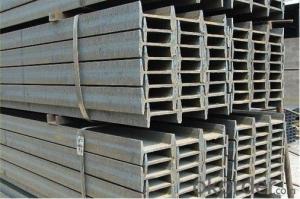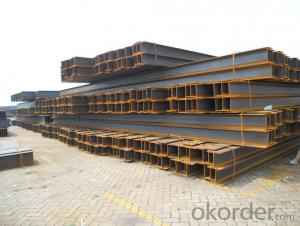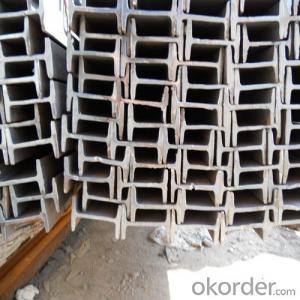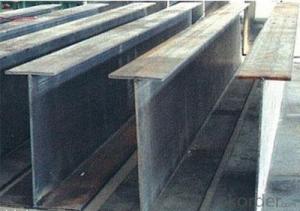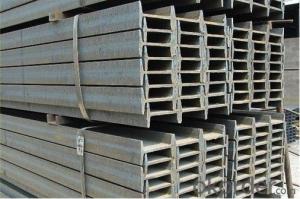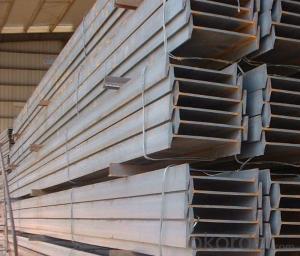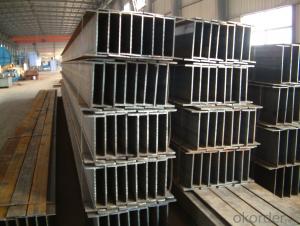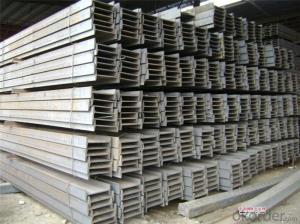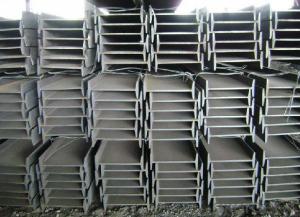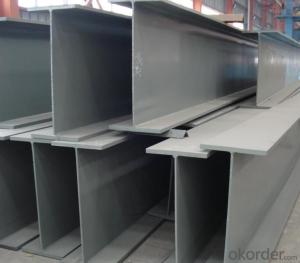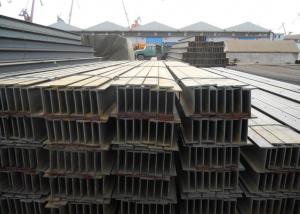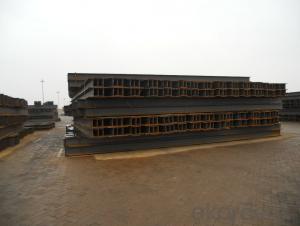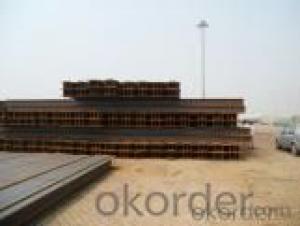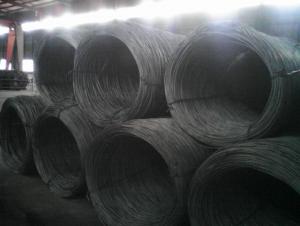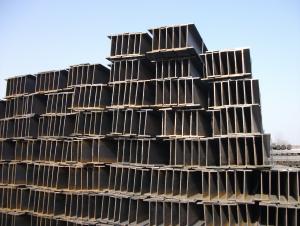Hot Rolled IPE and IPEAA Beams Grade Q235 Steel H-Beams
- Loading Port:
- China main port
- Payment Terms:
- TT OR LC
- Min Order Qty:
- 50 m.t.
- Supply Capability:
- 10000 m.t./month
OKorder Service Pledge
OKorder Financial Service
You Might Also Like
Hot Rolled IPE and IPEAA Beams Grade Q235 Steel I-Beams
Product Description:
OKorder is offering high quality Hot Rolled Steel I-Beams at great prices with worldwide shipping. Our supplier is a world-class manufacturer of steel, with our products utilized the world over. OKorder annually supplies products to European, North American and Asian markets. We provide quotations within 24 hours of receiving an inquiry and guarantee competitive prices.
Applications:
Hot Rolled Steel I-Beams are ideal for structural applications and are widely used in the construction of buildings and bridges, and the manufacturing, petrochemical, and transportation industries.
Advantages:
OKorder's Steel I-Beams are durable, strong, and resist corrosion.
Main Features:
· Premium quality
· Prompt delivery & seaworthy packing (30 days after receiving deposit)
· Corrosion resistance
· Can be recycled and reused
· Mill test certification
· Professional Service
· Competitive pricing
Specifications:
Manufacture: Hot rolled
Grade: Q195 – 235
Certificates: ISO, SGS, BV, CIQ
Length: 6m – 12m, as per customer request
Chinese Standard (H*W*T) | Weight (Kg/m) | 6m (pcs/ton) | Light I (H*W*T) | Weight (Kg/m) | 6m (pcs/ton) | Light II (H*W*T) | Weight (Kg/m) | 6M |
100*68*4.5 | 11.261 | 14.8 | 100*66*4.3 | 10.13 | 16.4 | 100*64*4 | 8.45 | 19.7 |
120*74*5.0 | 13.987 | 11.9 | 120*72*4.8 | 12.59 | 13.2 | 120*70*4.5 | 10.49 | 15.8 |
140*80*5.5 | 16.89 | 9.8 | 140*78*5.3 | 15.2 | 10.9 | 140*76*5 | 12.67 | 13.1 |
160*88*6 | 20.513 | 8.1 | 160*86*5.8 | 18.46 | 9 | 160*84*5.5 | 15.38 | 10.8 |
180*94*6.5 | 24.143 | 6.9 | 180*92*6.3 | 21.73 | 7.6 | 180*90*6 | 18.11 | 9.2 |
200*100*7 | 27.929 | 5.9 | 200*98*6.8 | 25.14 | 6.6 | 200*96*6.5 | 20.95 | 7.9 |
220*110*7.5 | 33.07 | 5 | 220*108*7.3 | 29.76 | 5.6 | 220*106*7 | 24.8 | 6.7 |
250*116*8 | 38.105 | 4.3 | 250*114*7.8 | 34.29 | 4.8 | 250*112*7.5 | 28.58 | 5.8 |
280*122*8.5 | 43.492 | 3.8 | 280*120*8.2 | 39.14 | 4.2 | 280*120*8 | 36.97 | 4.5 |
300*126*9 | 48.084 | 3.4 | 300*124*9.2 | 43.28 | 3.8 | 300*124*8.5 | 40.87 | 4 |
320*130*9.5 | 52.717 | 3.1 | 320*127*9.2 | 48.5 | 3.4 | |||
360*136*10 | 60.037 | 2.7 | 360*132*9.5 | 55.23 | 3 |
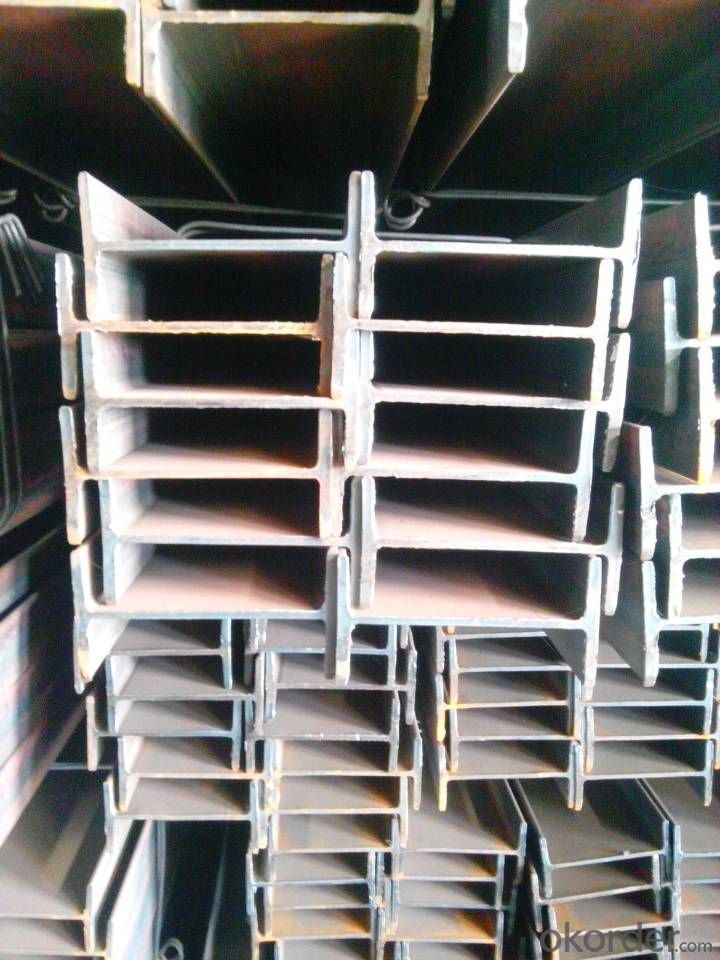
- Q: How do steel H-beams perform in earthquakes?
- Due to their high strength and stiffness, steel H-beams are extensively utilized in construction. When it comes to earthquakes, these beams are renowned for their exceptional performance and resilience. The effective distribution and dissipation of energy generated during an earthquake is made possible by the design of steel H-beams. Their inherent strength and rigidity enable them to endure the lateral forces and vibrations caused by seismic activity. Throughout an earthquake, the H-beams function as load-bearing elements, providing structural stability to the building. Their shape and cross-section enable them to resist bending and twisting forces, thereby minimizing the risk of collapse. Furthermore, steel H-beams possess a remarkable level of ductility, allowing them to deform significantly before failure. This characteristic enables them to absorb and dissipate seismic energy, thereby reducing the impact on the overall structure. In addition to their strength and ductility, steel H-beams also offer advantages in terms of construction speed and flexibility. They can be easily prefabricated off-site and quickly assembled on-site, making them a favored choice for earthquake-resistant buildings. All in all, the effectiveness of steel H-beams in earthquake-prone areas has been proven. Their capacity to withstand and absorb seismic forces establishes them as a dependable and secure option for constructing buildings and structures that must endure earthquakes.
- Q: What is the maximum load capacity of steel H-beams?
- The maximum load capacity of steel H-beams can vary depending on the specific dimensions and specifications of the beam. However, in general, steel H-beams have high load-bearing capacities due to their structural design and material strength. It is advisable to consult engineering manuals or contact a structural engineer for accurate load capacity information based on the specific dimensions and properties of the H-beam in question.
- Q: How do steel H-beams perform in areas with high air pollution?
- Steel H-beams are renowned for their durability and strength, rendering them appropriate for a range of construction applications. Nevertheless, the performance of these beams can be somewhat affected in regions with elevated air pollution. Elevated levels of air pollution, particularly from sulfur dioxide and nitrogen oxide pollutants, can result in the generation of acidic compounds in the atmosphere. These compounds have the potential to react with the surface of steel H-beams, leading to corrosion and deterioration over time. The rate of corrosion can vary depending on the concentration of pollutants, levels of humidity, and other environmental factors. To mitigate the adverse effects of high air pollution on steel H-beams, preventive measures are frequently employed. These measures involve the application of protective coatings or paints on the beam's surface, creating a barrier against corrosive agents present in the air. These coatings aid in preventing direct contact between the steel and pollutants, thereby reducing the rate of corrosion. Regular maintenance and inspections are also essential to promptly identify and address any signs of corrosion. It is important to note that steel H-beams remain a reliable choice for construction in areas with high air pollution. With appropriate maintenance and protective measures, their performance can be preserved for an extended period. However, it is crucial to consider the specific environmental conditions and seek guidance from corrosion protection experts to ensure the most suitable solution for the given location.
- Q: Are steel H-beams suitable for use in the construction of correctional facilities or prisons?
- Certainly, steel H-beams are an appropriate option for the construction of correctional facilities or prisons. Due to their exceptional strength and durability, steel H-beams are widely used in the construction industry. These beams provide structural support and stability, making them perfect for the construction of secure and sturdy correctional facilities. One of the main necessities for correctional facilities is the ability to endure extreme conditions and resist potential threats. Steel H-beams are specifically designed to handle heavy loads and resist bending or warping, ensuring the facility's structural integrity. They can withstand high winds, earthquakes, and other natural disasters, making them a dependable choice for correctional facilities located in various areas. Furthermore, steel H-beams offer great flexibility in design and construction. They can be customized to meet specific project requirements and easily integrated with other building materials. This allows architects and engineers to design secure facilities that comply with safety standards and accommodate the unique needs of correctional facilities, such as high-security areas and specialized confinement spaces. Moreover, steel H-beams are fire-resistant, a crucial characteristic for correctional facilities where fire safety is a top priority. Steel does not burn or contribute to the spread of fire, providing an additional level of safety for both inmates and staff. Additionally, steel H-beams require minimal maintenance, reducing long-term costs associated with repairs and replacements. All in all, steel H-beams are a suitable choice for the construction of correctional facilities or prisons. Their strength, durability, versatility, and fire-resistant properties make them an ideal material for creating secure and robust structures that can withstand the demanding and high-security requirements of correctional facilities.
- Q: Can steel H-beams be used in hospital construction?
- It is possible to utilize steel H-beams in the construction of hospitals. These beams are frequently employed in the construction sector due to their robustness, endurance, and adaptability. They offer structural reinforcement and can be utilized in diverse applications, including the construction of hospitals. H-beams are commonly employed in hospital construction to bear the weight of the building, establish spacious and flexible areas, and endure the demands of the healthcare setting. They can be employed in constructing floors, ceilings, walls, and roofs, guaranteeing the safety and stability of the hospital's structure. Furthermore, steel H-beams can be easily fabricated and installed, making them a cost-effective and efficient selection for hospital construction projects.
- Q: Can steel H-beams be used for supporting mining infrastructure?
- Yes, steel H-beams can be used for supporting mining infrastructure. H-beams are commonly used in construction and civil engineering projects due to their strength and versatility. They are designed to withstand heavy loads and provide structural support, making them suitable for use in mining infrastructure. The mining industry often requires robust support systems to ensure the stability and safety of underground tunnels, shafts, and other mining structures. Steel H-beams are ideal for this purpose as they offer high load-bearing capacity and resistance to bending, making them capable of withstanding the challenging conditions found in mining environments. Additionally, steel H-beams can be easily customized to meet specific project requirements. They can be cut to various lengths and welded together to form larger structural elements, allowing for the creation of complex support systems tailored to the unique needs of mining infrastructure. Furthermore, steel H-beams are durable and have a long lifespan, reducing the need for frequent maintenance or replacement. This is particularly important in the mining industry, where downtime and maintenance costs can significantly impact productivity and profitability. In summary, steel H-beams are a suitable choice for supporting mining infrastructure due to their strength, versatility, and durability. They provide the necessary support and stability required in mining environments, making them an excellent option for constructing and reinforcing underground mining structures.
- Q: Can steel H-beams be used for mezzanine storage systems?
- Yes, steel H-beams can be used for mezzanine storage systems. Mezzanine storage systems are designed to create additional space in a warehouse or industrial facility by utilizing the vertical height of the building. Steel H-beams are commonly used as the main structural component in mezzanine systems due to their strength, durability, and ability to support heavy loads. The H-beams are typically bolted together to form a sturdy framework that can support the weight of the mezzanine floor and the stored items. Additionally, steel H-beams can be easily customized and adapted to fit the specific requirements of the mezzanine system, making them a suitable choice for such applications.
- Q: Can steel H-beams be used in architectural applications?
- Yes, steel H-beams can be used in architectural applications. H-beams are commonly used in construction and engineering projects due to their strength, durability, and versatility. In architectural applications, H-beams can be used to create structural frameworks for buildings, bridges, and other structures. They can provide support and stability, allowing for larger open spaces and flexible design options. Additionally, H-beams can be used for aesthetic purposes, adding an industrial or modern look to architectural designs. With proper engineering and design considerations, steel H-beams can be successfully incorporated into various architectural applications.
- Q: What are the different surface coatings available for steel H-beams?
- Various surface coatings are available for steel H-beams, each offering unique benefits and protection. These coatings encompass the following options: 1. Paint: The most common and cost-effective coating for steel H-beams is paint. It creates a protective layer that prevents corrosion and can be customized with different colors or finishes. Periodic maintenance and touch-ups are necessary to maintain its effectiveness. 2. Galvanizing: A prevalent coating for steel H-beams is galvanizing, which involves applying a layer of zinc through hot-dip galvanization. This coating provides excellent corrosion resistance and is particularly suitable for outdoor applications or environments with high humidity or exposure to chemicals. 3. Powder Coating: Powder coating is an environmentally friendly and durable option for steel H-beams. It entails applying a dry powder that is then heated and fused into a smooth and protective layer. Powder coatings resist corrosion, chemicals, and UV rays, making them suitable for indoor and outdoor use. 4. Epoxy Coating: Epoxy coatings are commonly used in industrial or marine settings where superior chemical resistance is required. These coatings are applied in multiple layers and offer excellent protection against corrosion, abrasion, and impact. 5. Chrome Plating: Chrome plating involves depositing a thin layer of chromium onto the surface of steel H-beams. This coating provides exceptional corrosion resistance and a reflective, visually appealing finish. It is often used for decorative or high-end applications. 6. Thermal Spray Coatings: Thermal spray coatings encompass applying a molten material onto the steel H-beam surface using a specialized spraying process. The materials used can include zinc, aluminum, or ceramics, depending on the desired properties. Thermal spray coatings offer excellent corrosion resistance, thermal insulation, or wear resistance, depending on the material applied. When selecting a surface coating for steel H-beams, it is important to consider the specific application and environmental conditions. Consulting with a coatings specialist or manufacturer can help determine the most appropriate coating based on performance requirements, aesthetics, and budget.
- Q: Can steel H-beams be used in school gymnasium or sports facility construction?
- Yes, steel H-beams can be used in school gymnasium or sports facility construction. Steel H-beams are commonly utilized in construction projects due to their high strength and load-bearing capabilities. They provide structural support and can withstand the weight and pressures associated with gymnasiums or sports facilities. Additionally, steel H-beams offer versatility in design and can be customized to meet specific project requirements.
Send your message to us
Hot Rolled IPE and IPEAA Beams Grade Q235 Steel H-Beams
- Loading Port:
- China main port
- Payment Terms:
- TT OR LC
- Min Order Qty:
- 50 m.t.
- Supply Capability:
- 10000 m.t./month
OKorder Service Pledge
OKorder Financial Service
Similar products
Hot products
Hot Searches
Related keywords
